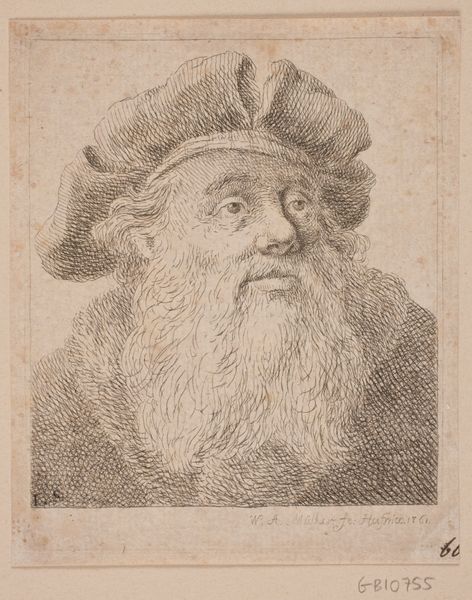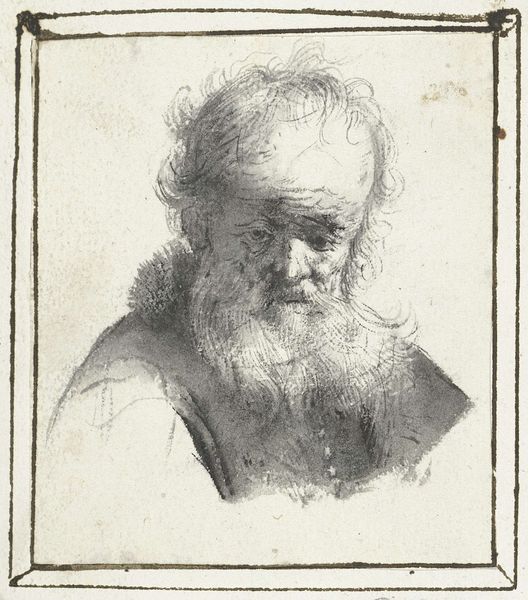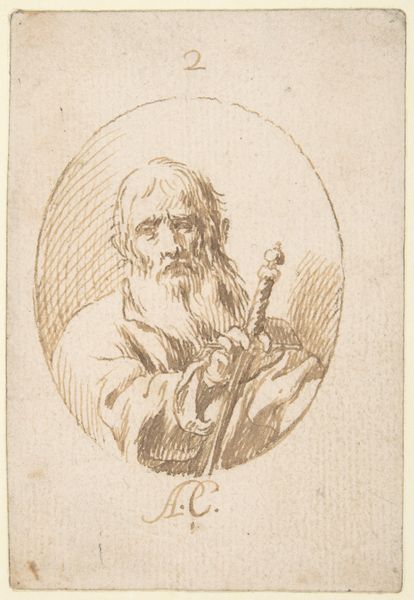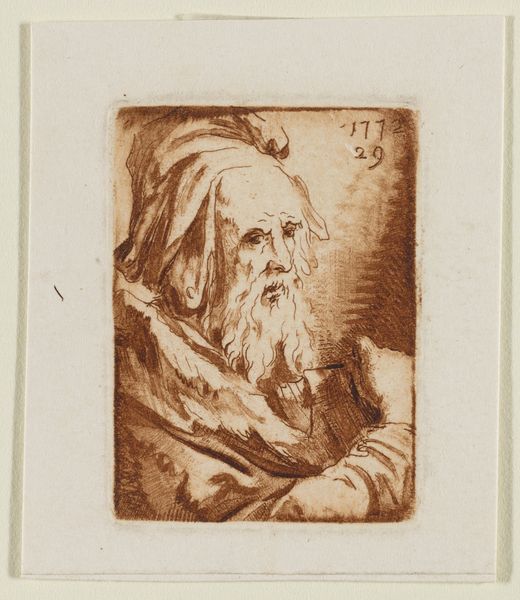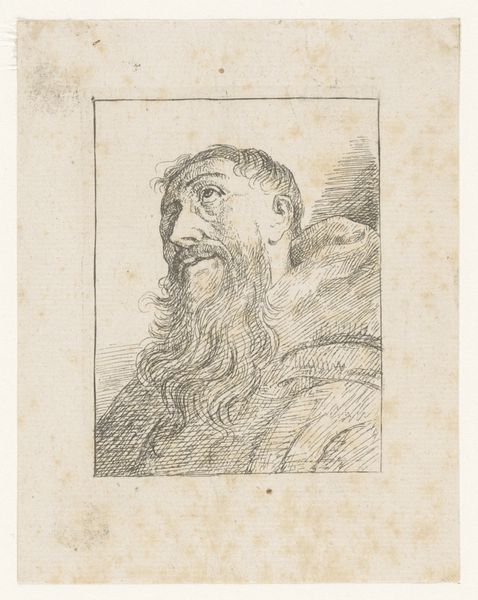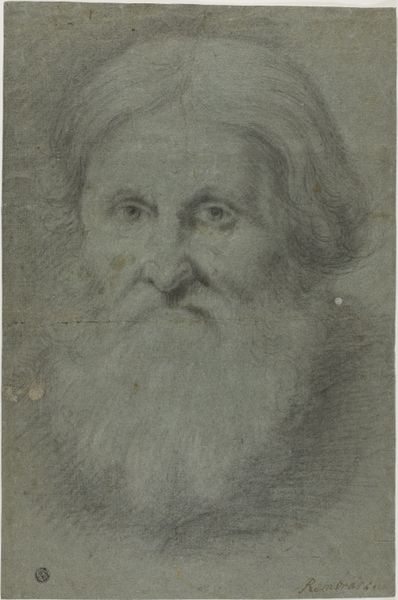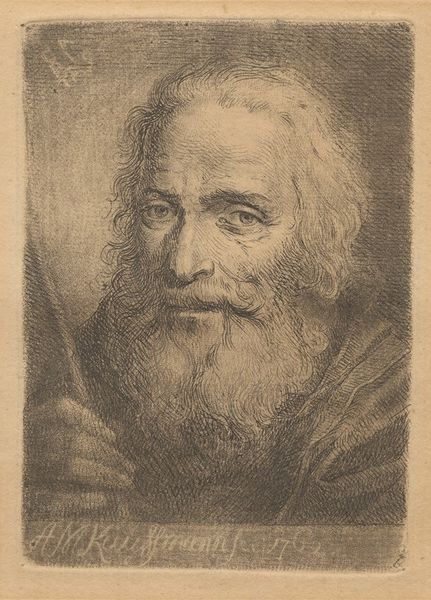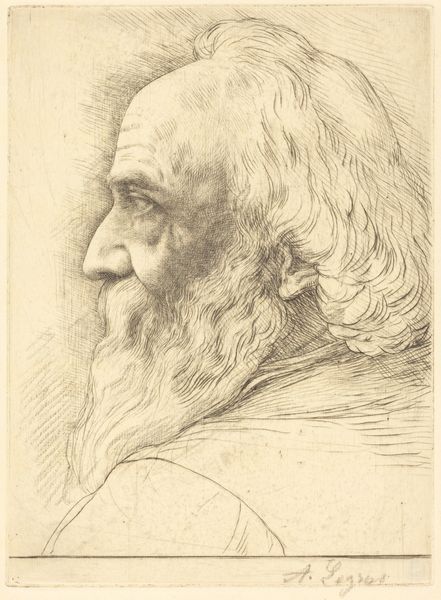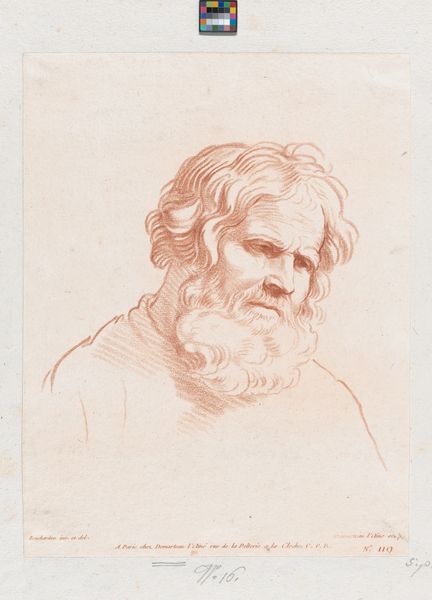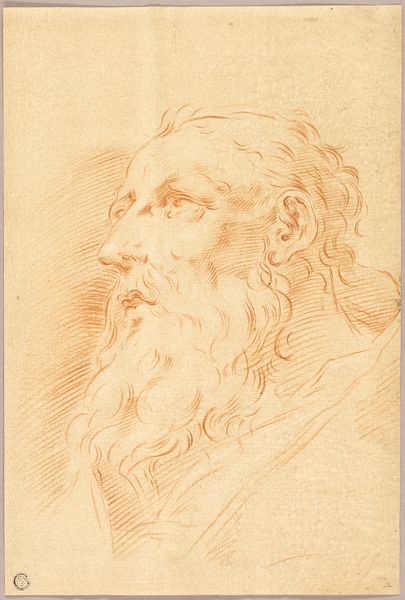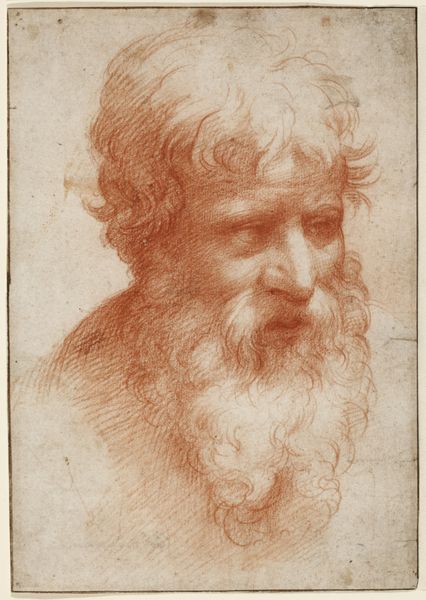
drawing, paper, chalk, charcoal
#
portrait
#
drawing
#
baroque
#
charcoal drawing
#
figuration
#
paper
#
chalk
#
line
#
portrait drawing
#
charcoal
#
italian-renaissance
Dimensions: 197 × 138 mm
Copyright: Public Domain
Editor: This is Guercino’s "Bust of Saint or High Priest," created around 1645 using charcoal and chalk on paper. The reddish-brown hue creates a somber mood. The linear strokes forming the drapery contrast the loose scribbles describing the hair and beard. What strikes you when you examine this portrait? Curator: I am immediately drawn to the interplay of lines and forms, and the inherent semiotics involved. Consider the economy of the strokes. See how they construct volume and texture? The artist coaxes depth and dimensionality from the page with limited means. Observe how the subject’s upward gaze functions within the overall composition. What effect do you think that has on the viewer? Editor: It directs my eye upward, adding to the sense of contemplation. It’s interesting how much emotion is conveyed with so few details. Curator: Precisely. The expressiveness hinges upon the formal arrangement, the strategic use of light and shadow achieved through hatching and cross-hatching. Note, for example, the concentration of lines around the eyes and mouth; it gives definition to areas suggesting deep contemplation. And that rosette clasping his garment is cleverly positioned in the center. What compositional purpose might that serve? Editor: I suppose it anchors the loose fabric, holding everything in balance. I hadn't noticed that so much intention went into it. Curator: Exactly. The artwork embodies Baroque aesthetic in the most minimal way; its artifice and emotion conveyed only by its skillful manipulation of line and form. Its inherent expressiveness lies there, beyond the need to know specifically whom or what he depicts. Editor: Looking at it now, I can see past the simple portrait to appreciate how line and composition carry so much weight. Curator: Indeed. Its essence lies in the formal construction and the artist’s capacity to communicate effectively with minimal elements. It encourages a very deep analysis and offers endless reinterpretations.
Comments
No comments
Be the first to comment and join the conversation on the ultimate creative platform.
